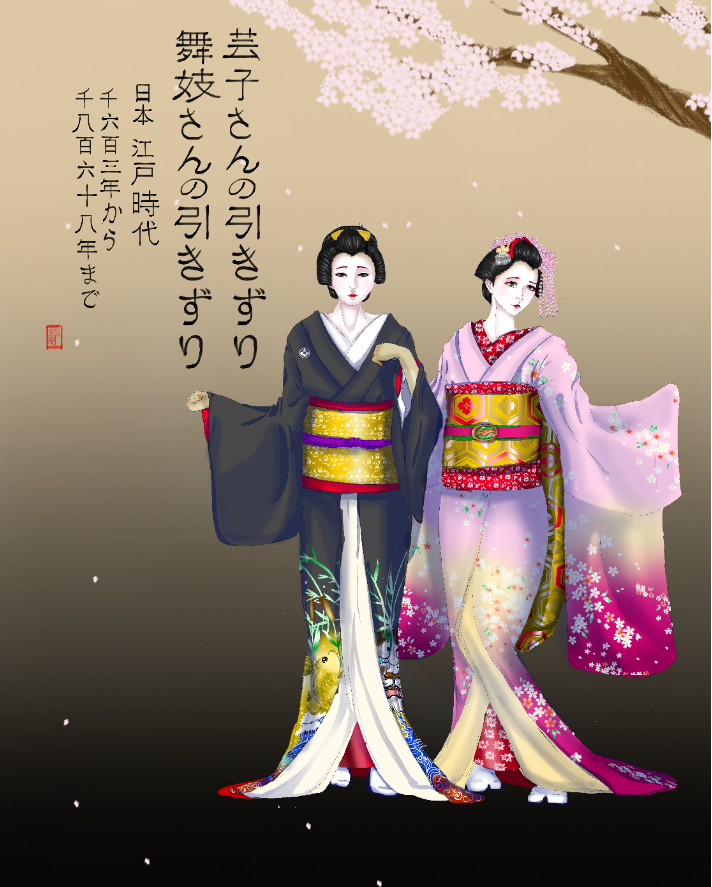
There are many forms of traditional entertainers and artists in Japan, but the most famous and iconic are undoubtedly the kimono(きもの) dawned Geisha (or Geiko) ( 芸子) and Maiko (舞妓) or apprentice Geisha. This profession gained its height during the Edo period which lasted from 1603 to 1868. Geisha and Maiko wear a special kind of kimono called Hikizuri (引きずり) literally meaning trailing skirt. Now a days this type of kimono is worn almost solely by Geisha and maiko, kabuki actors, other types of folk dancers, and brides. It used to be worn by upper class women as well as prostitutes (mostly in door wear) but it is extremely rare to see one in public. Contrary to popular belief, Geisha and Maiko were not and are not prostitutes. While their origin can be traced in prostitution, this is not their current purpose. This confusion came about when American soldiers went to Japan after the second world war and confused Geisha with Oiran and other sex worker (all of which traditionally wore kimono and similar makeup). In fact, originally, Geisha were all men in the past, and served more as court jesters in away. Female geishas emerged when a prostitute could not earn money on her own, so she learned dance and the arts to attract attention. This resulted in more women taking up that path, and then female geishas weree prohibited to sleep with customers and became sperate from sex work. The more obvious way to tell a Geisha and a courtesan apart would be in the way they tie their obi or sash. If the knot or bow of their obi is tied at their stomach, they are a courtesan. If the tie of their obi is tied at their back, they are a Geisha/Maiko. There are also differences between an apprentice and a geisha appearance wise. The apprentice Geisha (maiko) are dressed more festively and vibrant, and the actual Geisha are more subdued and mature in their appearance. Also, an interesting nickname given to geisha by patrons was neko (猫) or cat.